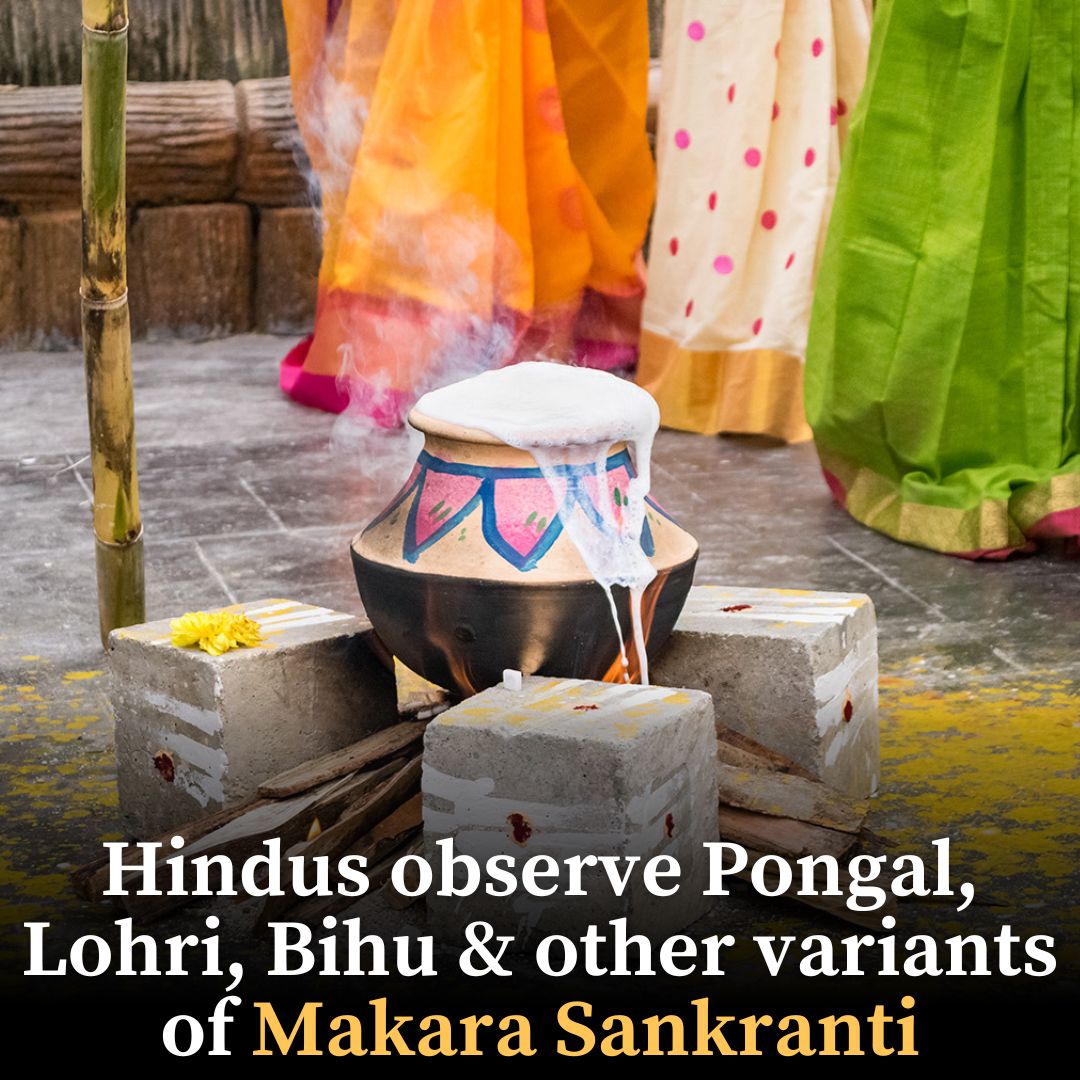Hindus mark Makar Sankranti today. Lohri, Pongal, Magh Bihu and Uttrayan are some of the regional variations of this festival that are observed either on the eve or actual day of the Sankranti. Marked as per the Hindu Solar calendar, Makar Sankranti occurs just after the winter solstice and marks the arrival of warmer and brighter days. This festival is an important time for Hindus to renew their spiritual connection with the forces of nature, particularly Surya, the Deva of solar energy, health and the light of awareness present in all living beings. For Hindus in Bharat, Makar Sankranti is also the winter harvest festival.
About the image: Classic depiction of Surya holding fully blossomed lotuses: sculpture from Central India now at Matsuoka Museum – Tokyo. Though one of the five principal forms of the supreme reality (Panchadeva), the worship of Surya suffered decline, and hence some of the most beautiful depictions of Surya are to be found in museums rather than temples. This image dates to the 10-11th century when Surya worship was at its peak. So popular was this form of Hinduism, that along with Surya, his parivar devatas (attendant deities) also received offerings and some enjoyed their own festivals (much like how Shiva and his family are revered today). Some of these devatas can be found here. Immediately to the right and left of Surya are female figures of Rajni and Chayya, and standing directly in front is Mahashevta. These Devis are forms of Surya’s Shakti (power), who assume the role of his wives. Further forms of this Shakti are the twin Devis Usha and Pratyusha, shown with bow and arrows at the extreme top right and left. In modern Hinduism, the folk tradition of Randal Mata in Gujarat is what remains of the worship of Surya’s Shakti.
The male figure on the bottom right holding a book is Pingala, (Chitragupta), the deity who records karma. Mirroring Pingala on the left is Dandin, holding weapons he is the enforcer of karmas; often identified as Yama – Surya’s son. Both Pingala and Dandin guard the door guardians of Surya’s shrine. Other deities associated with Surya not depicted here are his daughters Yamuna and Tapti. Yamuna is one of Hinduism’s most sacred rivers, it is associated with Krishna’s youth, though today is extremely polluted. Tapti; another sacred river, flows through Surya’s sacred city of Suryapur (modern Surat, Gujarat). Shani (the controller of Saturn), Revanta (Deva of hunters and equestrian sports) and twins Ashwini-Kumars (Devas of medicine and healing) are his other sons. Surya rides on a chariot of 7 horses which is controlled by Aruna (Deva of Dawn).
Hindus observe Pongal, Lohri, Bihu and other variants of Makara Sankranti

